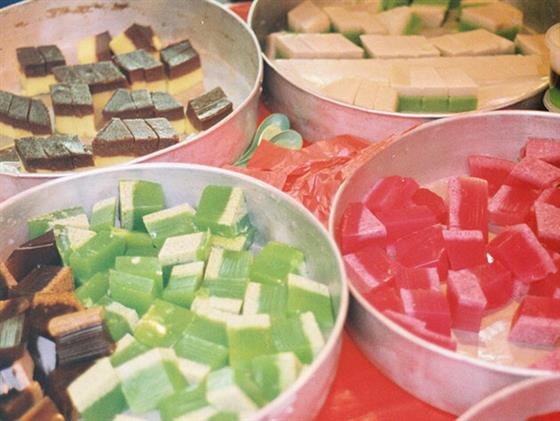
Guide to Gelling for the New Year
By Sim Ee Waun - Monday, Feb 11, 2013
This extended, long weekend Chinese New Year, give a different spin to your festive offerings and serve up refreshing, light jellies instead. These sweet morsels are bound to be a hit with the kids and adults. You can always exercise creativity with the flavours and make child-friendly ones – with fruit juices and fruit cubes – and more sophisticated types for the grown-ups, with teas, flowers, and even alcoholic bases.
The most common types of gelling agents are agar-agar, konnyaku and gelatine. Not all come with instructions, so here’s a quick and convenient guideline to using them. Great for this week’s festival feasting and parties.
Agar agar Made from seaweed, agar agar’s unique trait is that it sets without refrigeration, and will not melt in heat – which is why it is so popular in Southeast Asia. Unlike gelatine which is made from animal-based extracts, agar agar is suitable for vegetarians.
Agar Agar comes largely in two forms – powder and strips. If you’re using powdered agar agar, sprinkle it over water or liquid for 5 minutes, then bring the liquid to a boil. The agar agar has to boil for at least 5 minutes to set properly. Stir often to make sure it has properly dissolved.
If using agar-agar in strand form, soak them in water for an hour, drain and squeeze out excess water, then boil it in the liquid of your choice until fully dissolved.
Generally 8g of agar-agar will set 1 litre of water into a soft jelly, so use more if you want firmer results.
For a taste of retro Singapore, make agar agar jellies with coconut milk, rose syrup, gula Melaka, and stuff it with fruits, and coloured red and green.
Konnyaku Jelly Made from the devil’s tongue plant, konnyaku potato plant, or konjac, konnyaku jelly gives a firm, bouncy consistency to the jelly once made. It doesn’t disintegrate like gelatine, so it can pose a choking hazard to the very young and elderly, so eat with care.
About 5g-8g of konnyaku would set 500 ml of liquid. Work quickly as konnyaku sets in a jiffy – even while the pot is hot. But because it sets very firm, it’s easily unmoulded. But left in the fridge for a few days and it tends to get watery. Many like to experiment making konnyaku jelly using juices, sweet teas, soy bean milk, popping in fruits and exotic ingredients like osmanthus, wolfberries, etc.
Gelatine Gelatine is made from collagen extracted from animals – usually from parts where there’s more muscular tissue, like hooves, feet, tails and even the head. They come in sheets or powder form.
It’s generally easier to use sheet gelatine than powdered, and it also turns out a clearer gel.
If using sheet gelatine, soak them in room temperature water for 3-5 minutes until softened, pick it out, squeeze out the excess liquid, and bring it to simmer with the liquid you are turning into a jelly (eg. juices, purees, etc). Make sure you start with room temperature liquids first.
To use powdered gelatine, place 2-3 Tbsp water into a bowl and sprinkle the powdered gelatine across the surface of the water. Let it soften and soak up the water before heating it up gently in a water bath. Stir often to dissolve, then use it to make your jelly.
Here’s a good equation to keep on your refrigerator door: 1 (7.5g) envelope granulated gelatine = 1 tbsp powdered gelatine = 3 sheets leaf gelatine will set 500 ml of liquid.
Just remember that pineapples and papaya will not set as enzymes in these fruits prevent it from setting. Canned or cooked pineapples would set though. Also you’ll need more gelatine when working with creamier, thicker or alcoholic liquids.
Summary: To set 500 ml of water, you’ll need: 4g agar agar 5g konnyaku 7.5g powdered gelatine or 3 sheets gelatine



